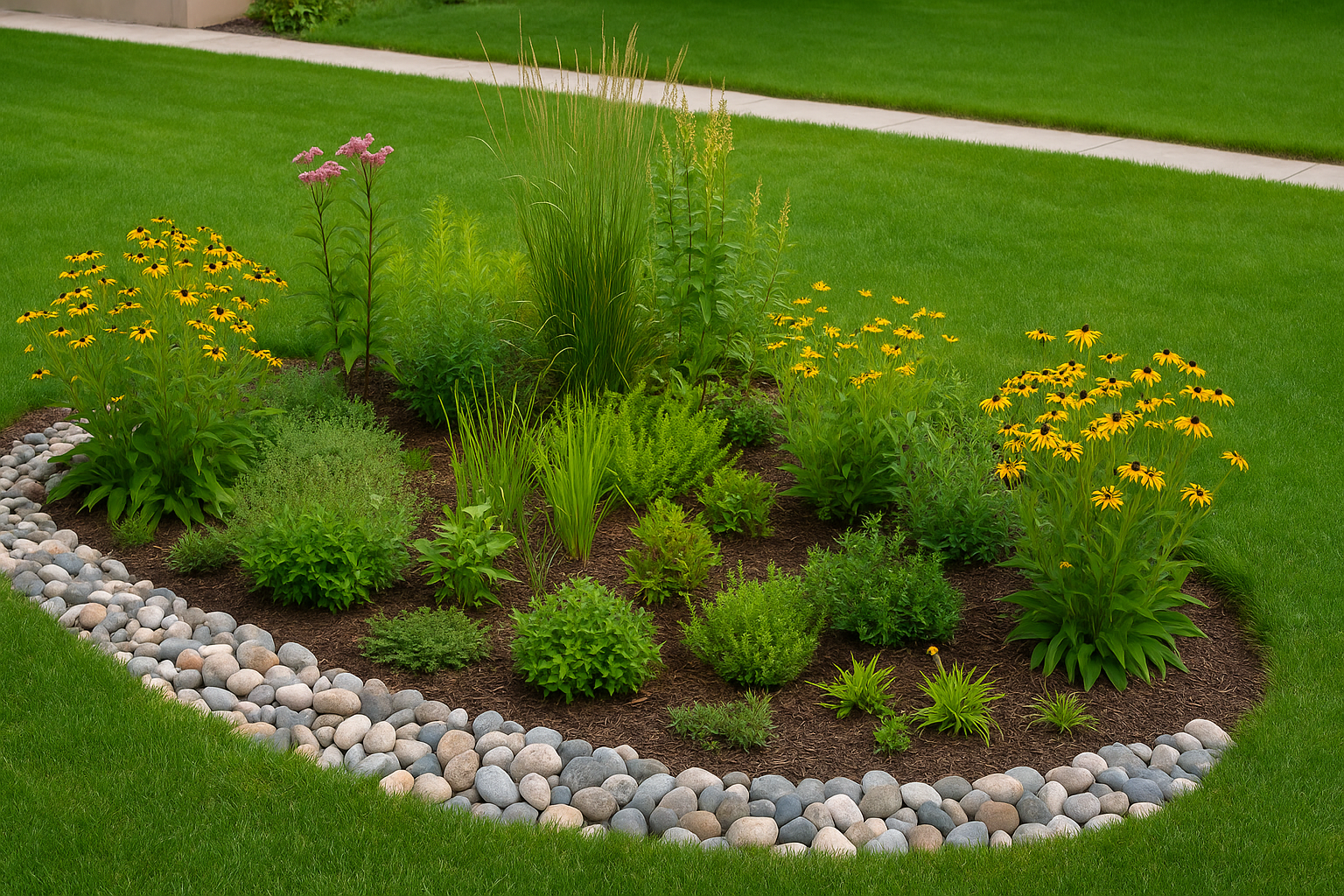Urban life has its perks—convenience, community, culture—but it also brings challenges, especially when it comes to managing water. From paved driveways to rooftops and roads, hard surfaces have drastically changed the way rainwater interacts with the ground. Instead of soaking in, water races across surfaces, collecting pollutants, overwhelming drainage systems, and often ending up in our rivers and oceans.
Enter the rain garden—a deceptively simple yet powerful design solution that combines function with beauty. These thoughtfully crafted gardens not only help manage stormwater runoff but also add biodiversity, visual appeal, and a touch of sustainability to homes, parks, and public spaces.
In this post, we’ll walk you through the 15 key principles and design ideas for creating a rain garden that’s both efficient and aesthetically stunning.
1. Understand the Purpose
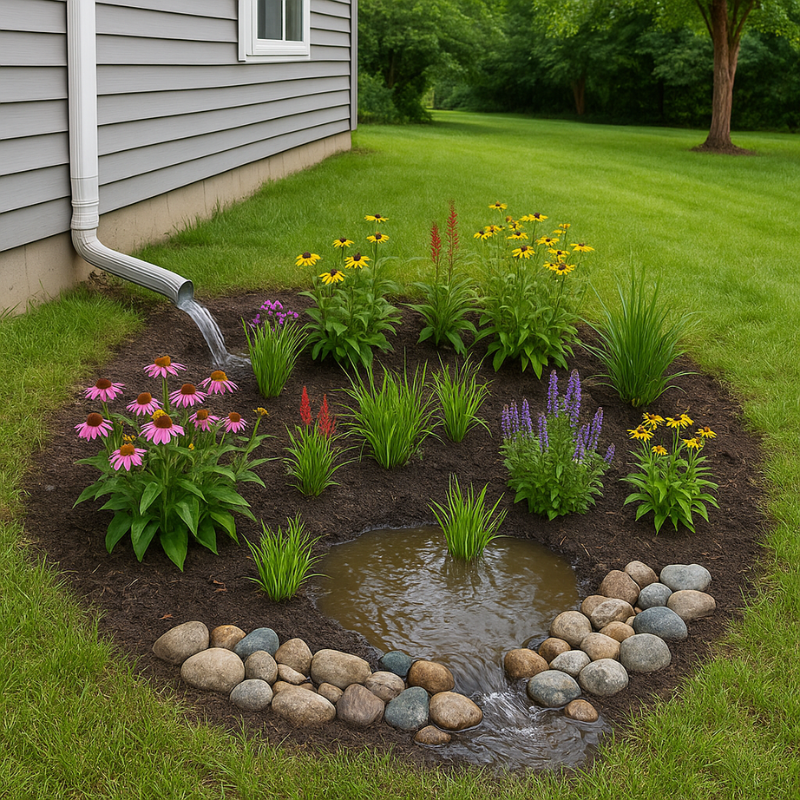
A rain garden is a shallow, planted depression designed to absorb and filter rainwater from impervious surfaces. Think of it as a natural sponge—collecting runoff, slowing it down, and allowing it to seep back into the earth. It’s an eco-friendly solution that reduces erosion, recharges groundwater, and filters pollutants.
2. Choose the Right Location

The success of a rain garden starts with site selection. Choose a spot at least 3 meters away from your home’s foundation and downhill from your runoff source (like a roof or driveway). Avoid areas with poor drainage or compacted soil.
3. Calculate the Size
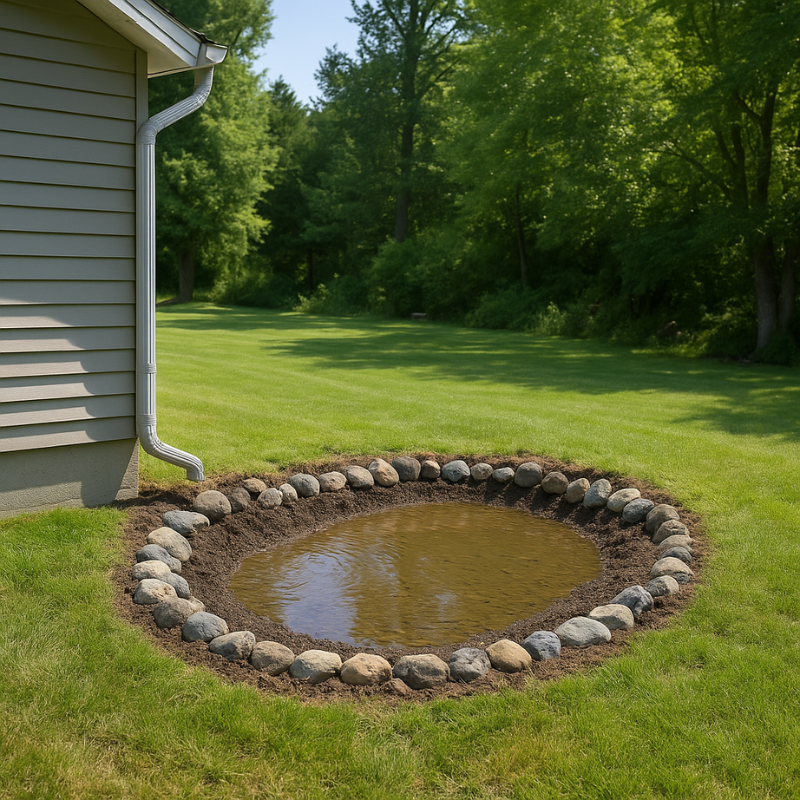
A general rule of thumb: your rain garden should be about 20–30% of the roof or surface area draining into it. This helps ensure your garden can handle the volume of stormwater it’s intended to collect.
4. Focus on Native Plants

Native plants are perfectly adapted to local climates and require less maintenance. More importantly, they support local wildlife, including pollinators and birds. Mix deep-rooted perennials, grasses, and flowering plants for a dynamic, seasonal display.
5. Think in Layers
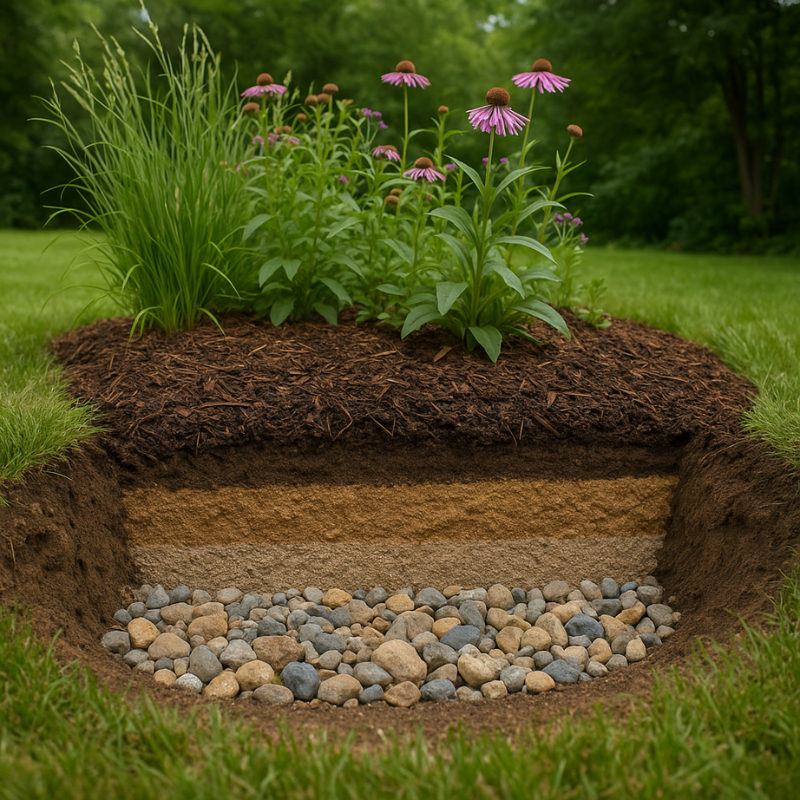
A rain garden isn’t just a hole filled with plants. It should be layered:
- A base of gravel or coarse sand for drainage
- A filter layer of sandy loam
- Mulch to retain moisture and reduce weeds
Each layer plays a role in soaking up and filtering water efficiently.
6. Use Curves, Not Lines
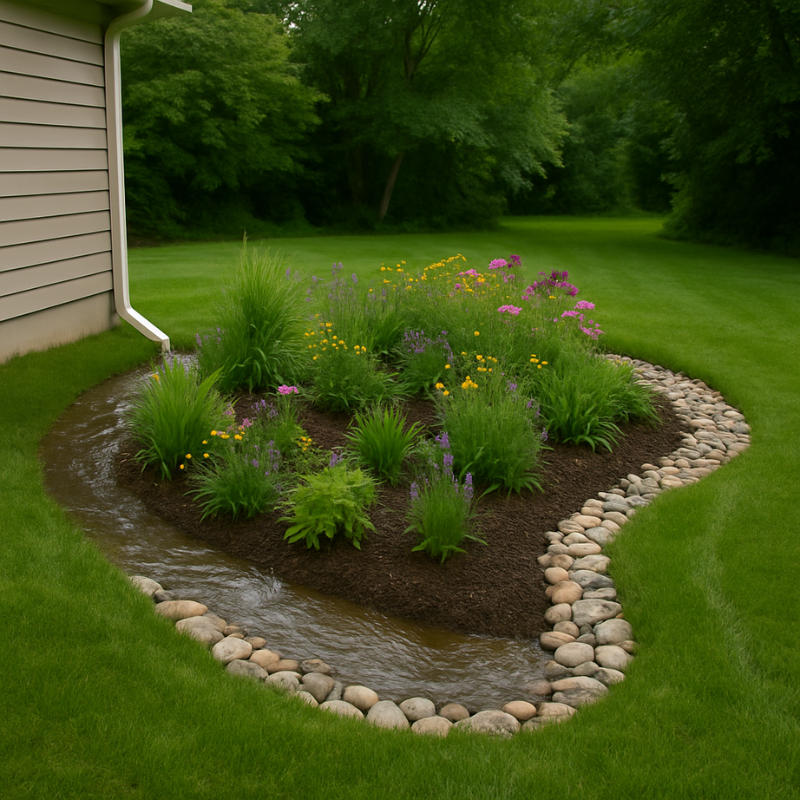
When shaping your rain garden, soft curves blend better with the natural landscape. Avoid rigid lines or boxy shapes. Think of how water naturally flows—it meanders, spreads, and pools.
7. Consider Seasonal Interest
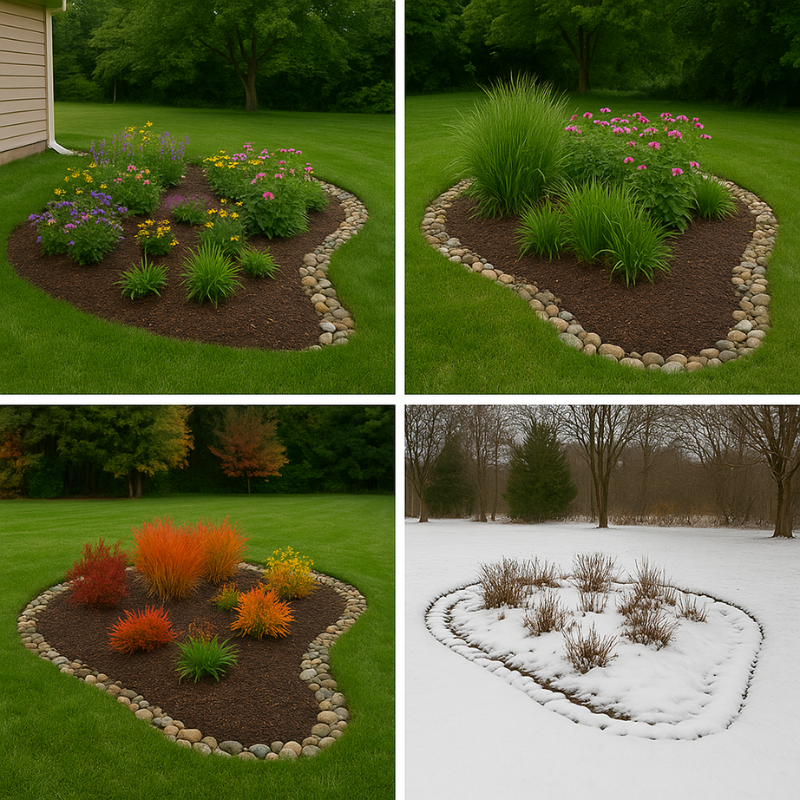
Plan for year-round beauty by choosing plants that bloom in different seasons. Spring wildflowers, summer grasses, and autumn foliage can keep your rain garden visually engaging throughout the year.
8. Create a Defined Inlet and Outlet
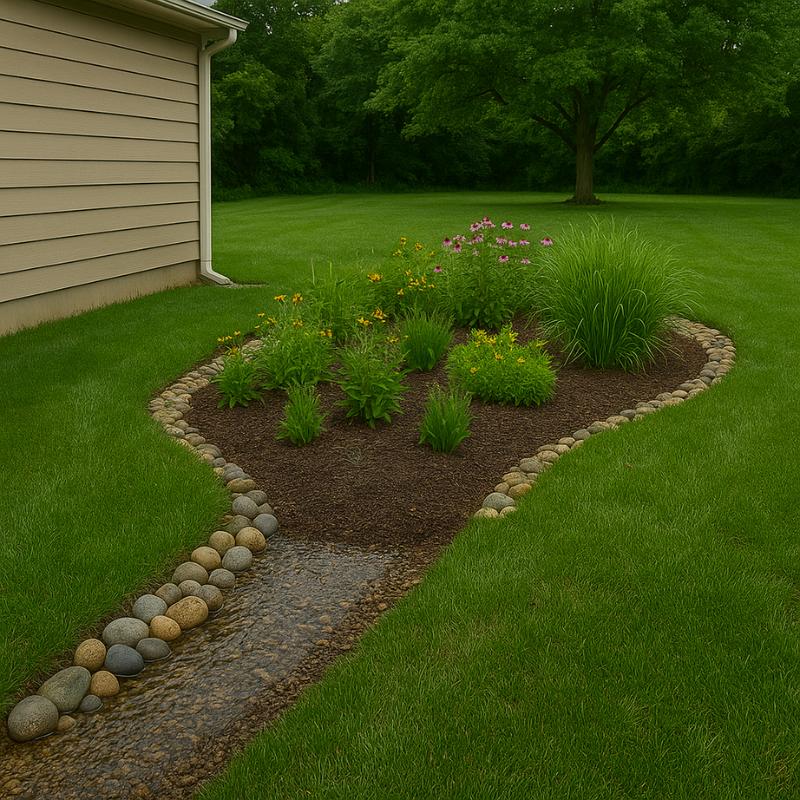
Guide water into your rain garden using a swale or decorative stone trench. Install an overflow area—usually a gravel-lined path—so excess water can exit safely during heavy rains.
9. Elevate with Edging
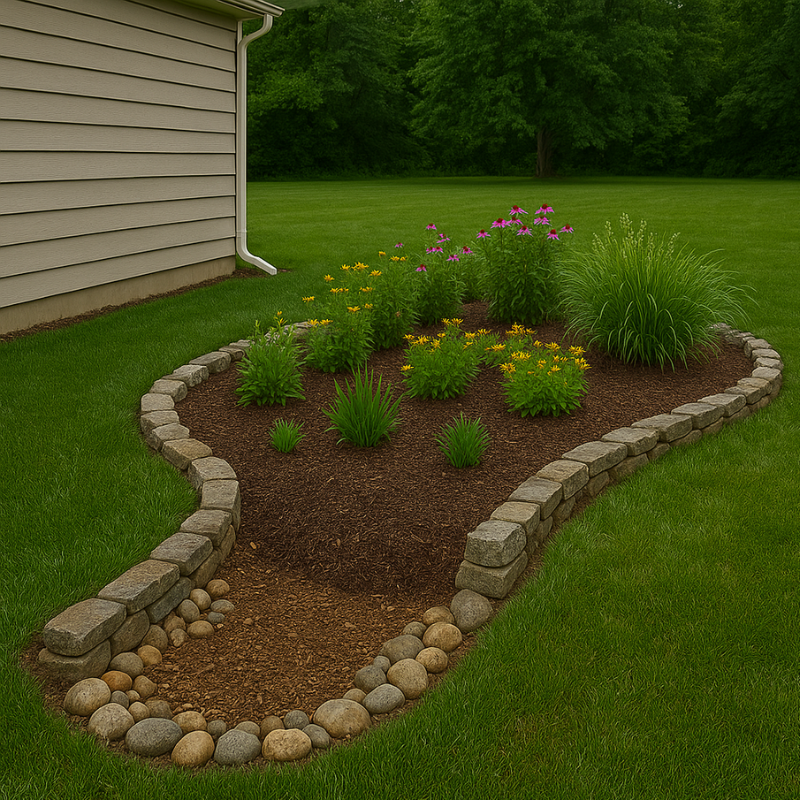
Natural stone, bricks, or logs can edge the rain garden, giving it definition while helping retain soil. It’s a chance to blend aesthetics with functionality.
10. Use Mulch Strategically
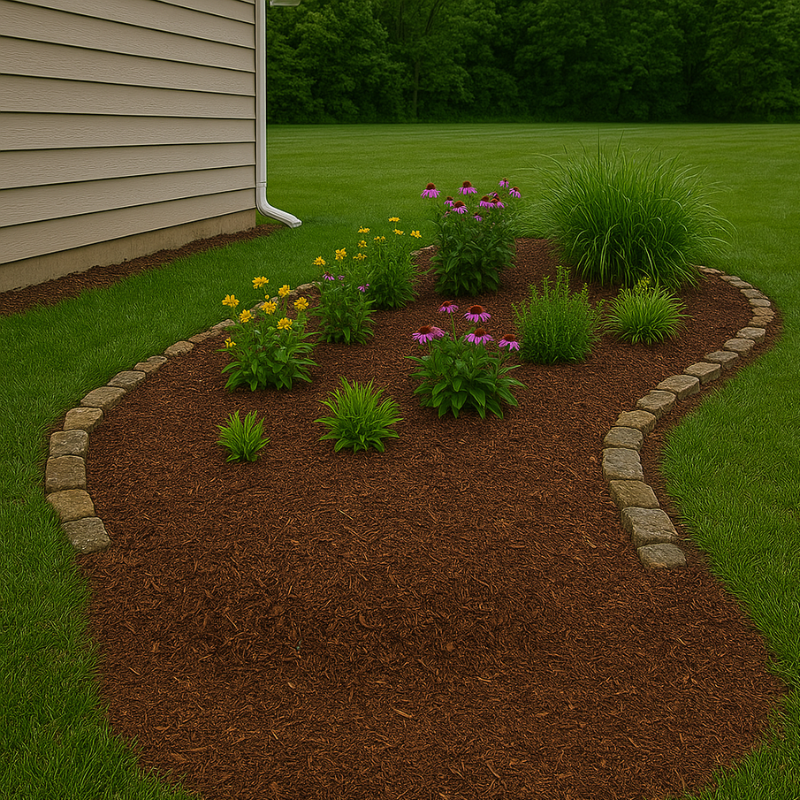
Shredded hardwood mulch is best—it doesn’t float away and decomposes slowly. Mulch helps reduce evaporation, suppress weeds, and enrich the soil over time.
11. Keep Maintenance Low
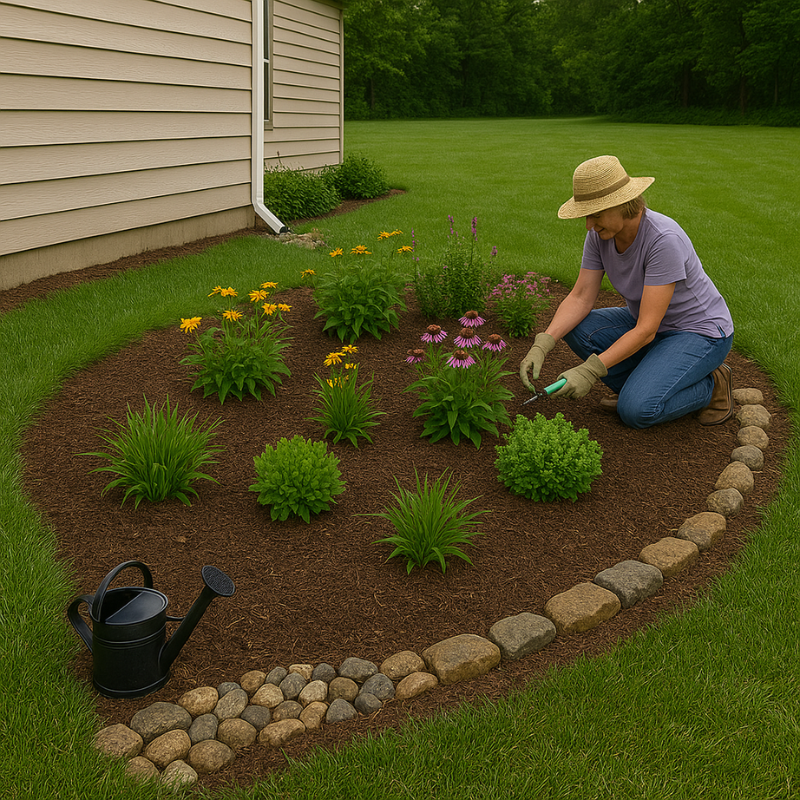
Once established, rain gardens require minimal care. In the first year, water during dry spells and remove invasive weeds. After that, annual mulching and occasional pruning will suffice.
12. Encourage Wildlife
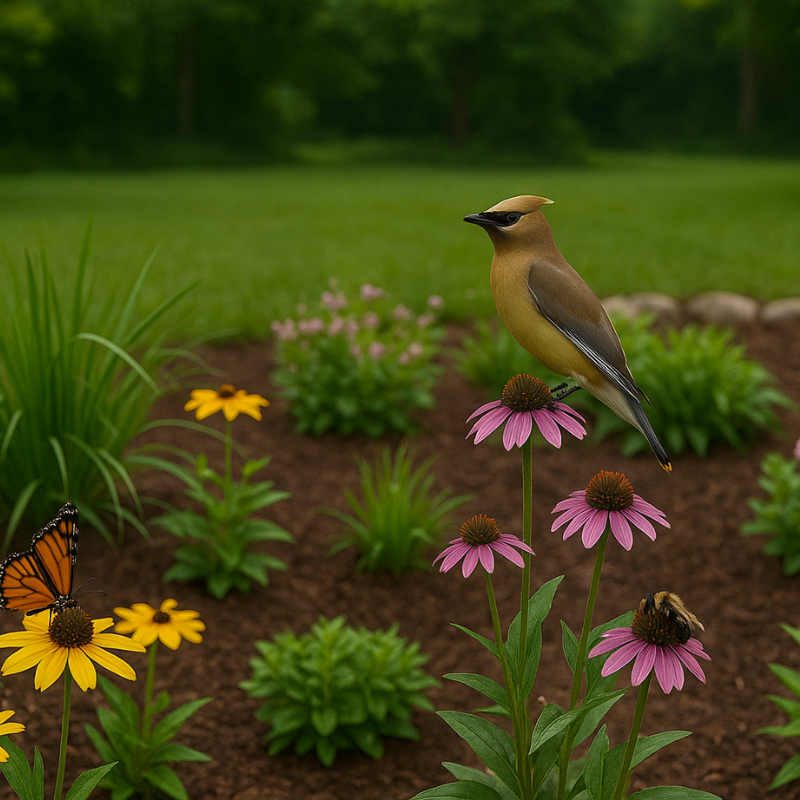
Rain gardens can double as miniature wildlife sanctuaries. Choose nectar-rich flowers, berry-producing shrubs, and grasses that provide shelter. You’ll soon spot butterflies, bees, and songbirds enjoying your space.
13. Integrate with Your Landscape
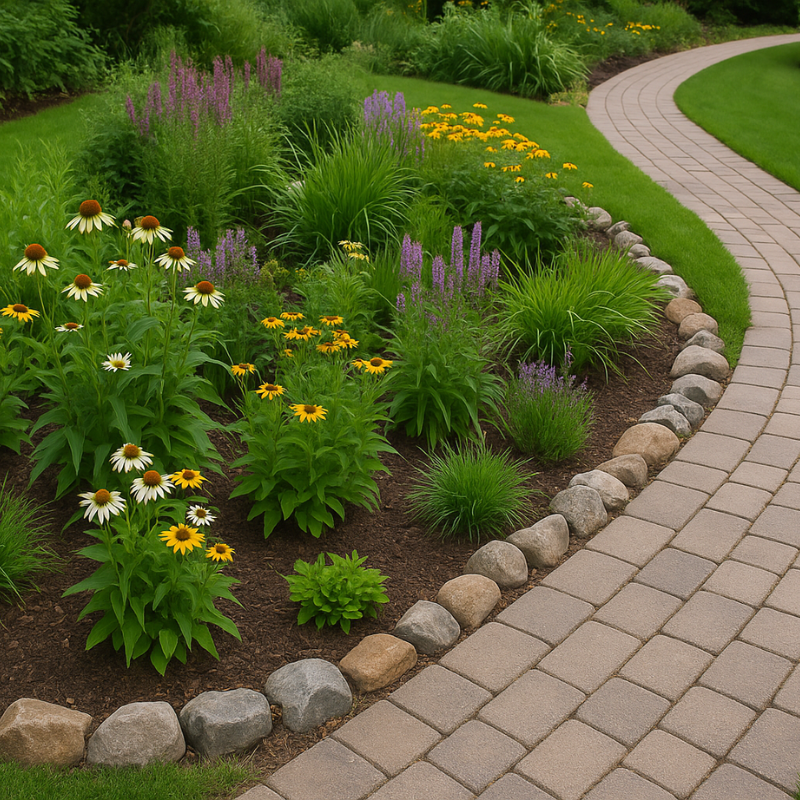
Rather than isolating the rain garden, integrate it into your existing landscape design. Use it to anchor a pathway, frame a patio, or define the edge of a lawn.
14. Make It Personal
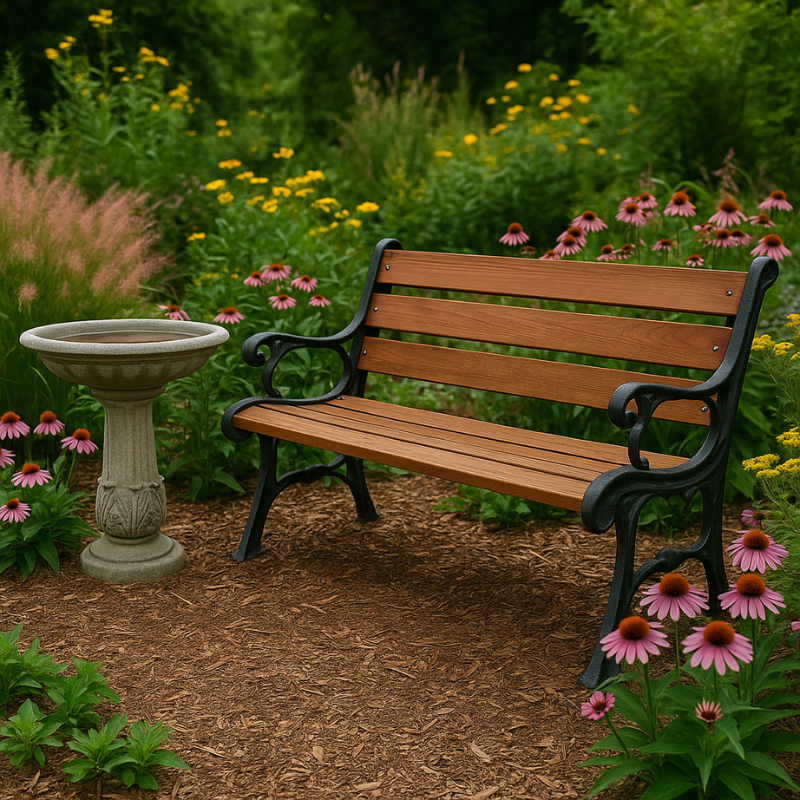
Incorporate a bench, a birdbath, or even a sculpture to make the garden truly yours. A rain garden can be as much about mindfulness and beauty as it is about function.
15. Think Long-Term
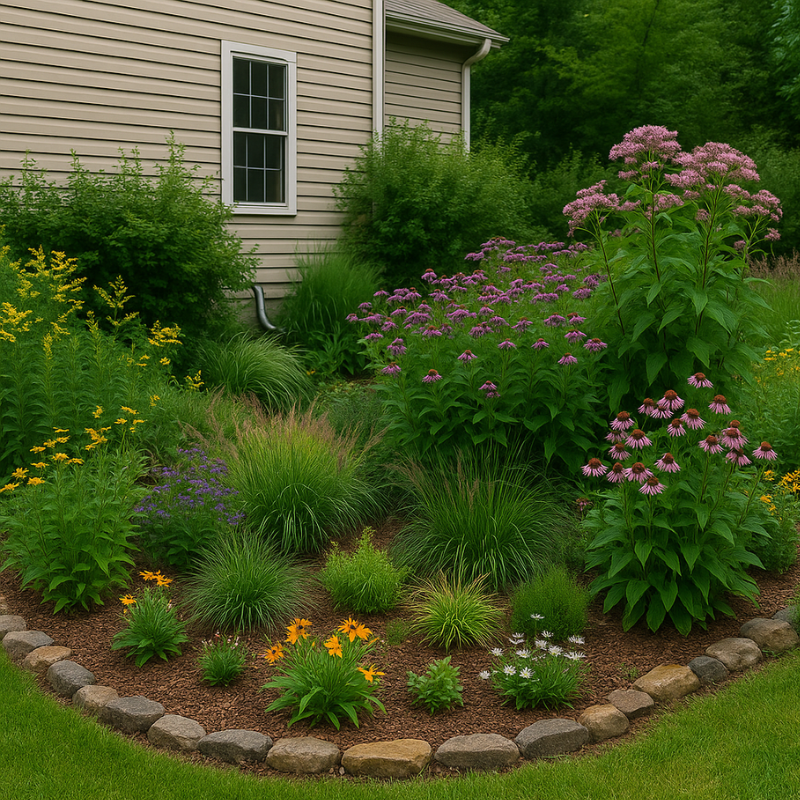
Your rain garden will evolve over time. Plants will fill in, wildlife will arrive, and the soil will become richer. Be patient and let nature do its work—you’ll be rewarded with a lush, living ecosystem that gives back season after season.
Why Rain Gardens Matter
In Australia and around the world, sustainable water management is becoming a priority. As climate patterns shift and urban sprawl expands, stormwater runoff is more than just a drainage problem—it’s an environmental one. Rain gardens are a simple, scalable way to be part of the solution.
They capture pollutants, reduce flooding, and bring green infrastructure into everyday spaces. More than that, they remind us that beauty and sustainability can—and should—go hand in hand.
Final Thoughts
Designing a rain garden is not just about controlling water—it’s about reconnecting with nature. It’s an act of stewardship, creativity, and vision. Whether you’re a homeowner, architect, or landscape designer, a well-planned rain garden can transform a forgotten corner of land into a thriving, purposeful space.
If you’re looking for inspiration, ideas, or professional insight into sustainable design, be sure to explore more on Ideas for Architecture.
Let your next project soak in some purpose—start designing with intention, one drop at a time.





